Pistol Optic Buyer’s Guide: What To Look For When Buying A Red Dot
Running a red dot on your pistol can present many advantages over your typical iron sights. Red dots are superior from an accuracy perspective, especially when you need to make more complex shots, are new to shooting, or are dealing with high-stress scenarios.
It’s much easier and often quicker to put a dot on a target than to line up iron sights, and if you’re in the market for a red dot, you’re in the right place.
We will review what you should consider before purchasing one and recommend some of the best, from budget to top-tier options.
Many shooters have spent money on an optic that doesn’t work with their firearm. It could be anything from the wrong footprint to the optic being too large for carrying, but not all red dots work with every gun and for every purpose.
I’m here to ensure it doesn’t happen to you.
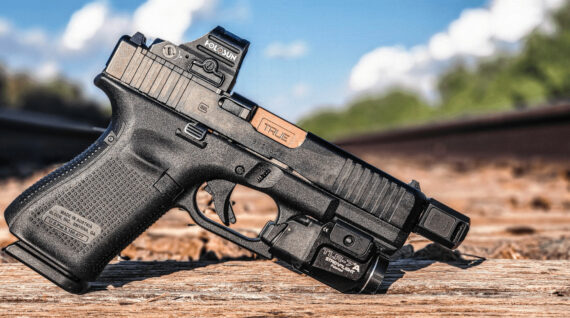
It’s easy to make a Glock look good. Source: reddit
What To Consider Before Buying A Red Dot
Footprint
The footprint of your optic determines how it attaches to your slide and includes the layout of the screw holes and the design of the bottom surface.
Before buying an optic, you want to ensure the optic’s footprint matches that of your pistol’s slide.
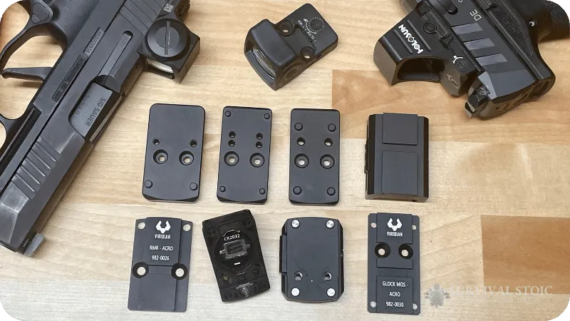
Here is an example of several different footprints. Source: survivalstoic
If you want something with an enclosed emitter, eliminating the chance of dirt blocking the projection of the red dot, your sight will be larger.
Of course, you can choose to use a smaller or larger optic for any purpose you want, but keep in mind that each has its pros and cons.
Window Size
Taking into account the size of the window on your optic is essential for many reasons, but the most important is that it allows you to acquire your dot quicker and still see what’s around your target.
Some optics with smaller windows block out a significant portion of the target, leaving too many blind spots, and that’s not what you want in a situation where your life or the lives of others are potentially on the line.
So, don’t sacrifice a good sight picture to keep your pistol as compact as possible.
If your pistol doesn’t have a cut for a red dot, you can have it milled by a gunsmith to fit the optic, or you can buy another slide that matches.
Adapter plates can help if you don’t want to go through the hassle of getting your slide milled for any reason. Note that an adapter plate will add height to your pistol, and not all plates work with all slides.
MOA
Minute Of Angle (MOA) is an angular measurement that requires extensive mathematical and scientific explanation to truly understand. For this article, we’ll keep it very simple: the MOA represents the size of the actual reticle/dot you see in your optic.
For example, a 6 MOA dot will be larger than a 3 MOA dot.
Size matters depending on how “surgical” you want to get. If you want to nail precision shots from 40 yards, the smaller dot will be a wiser option since it won’t cover up as much of the target. A larger dot is better for shooting in close quarters, like self-defense, since the dot is easier to find and quicker to get on target.
Whichever you choose is entirely up to you. I’ve noticed that most pros lean towards optics with a smaller dot, but this can take some getting used to when drawing through lots of training.
Overall Size
Depending on the type of build you’re going for, the housing size of your red dot can be a blessing or a curse.
Pistol red dots come in all shapes and sizes, and what you require from it will impact its size.
There are more compact sights like the Holosun 407C X2, popular for concealed carry on top of smaller firearms, and larger optics like the Aimpoint ACRO.
As for my suggestion, I’d recommend a larger sight window.
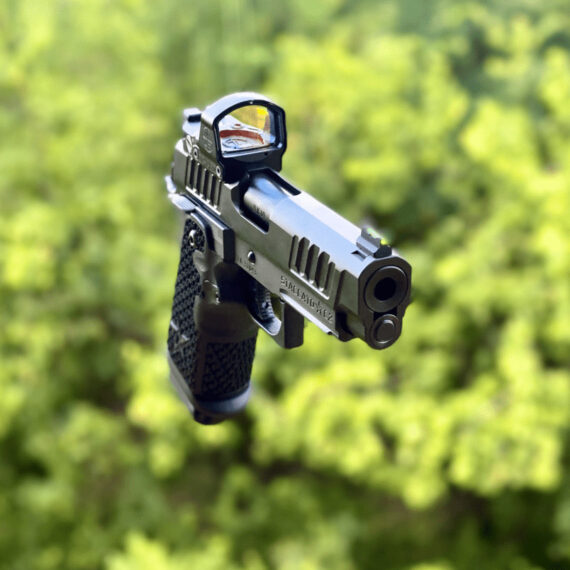
The Deltapoint Pro offers a sizeable window without being too bulky overall. Source: reddit
Reticle Color
Pistol sights are commonly found in two different reticle colors: red and green.
Both have their advantages and disadvantages.
Red-colored reticles are a solid option for nighttime shooting since they don’t hurt your natural night vision, are easier on the eyes, and don’t produce as much eye fatigue after extended shooting sessions.
The downside is red is more challenging to see in brighter conditions.
Green dots are great for daytime shooting. They are superior when the sun is out and will lower the time you spend looking for your reticle when drawing on a target.
The downside to green dots is their high reticle bleed (brightness settings can help), which can make them harder to use at night. If you’re shooting outside exclusively, keep in mind that a green dot may be difficult to find as quickly in an environment such as a forest where many shades of green are present.
The choice is yours. I recommend the red dot.
Best Pistol Optics
Top Dollar – AimPoint ACRO
The AimPoint ACRO features an enclosed emitter, which eliminates the possibility of dirt and other debris blocking the red dot from being emitted onto the glass. But not everyone has to worry about having a closed emitter. On a battle firearm, there’s a high possibility of you rolling in the mud, but for concealed carry purposes, it may be a bit overkill.
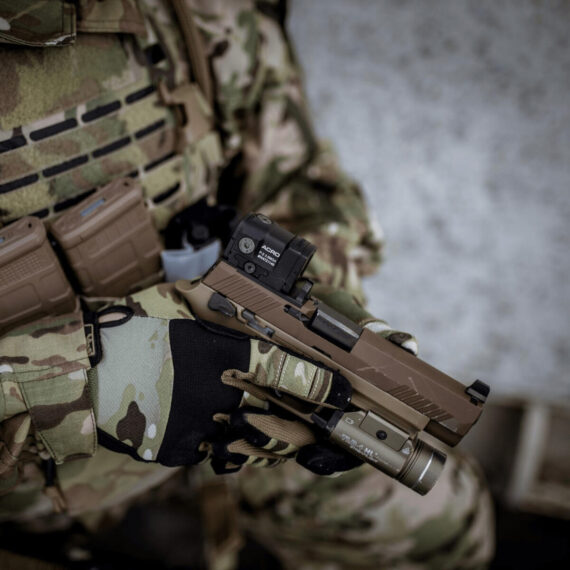
The ACRO is not for your compact builds! Source: aimpoint
The 3.5 MOA dot is a nice versatile size, and the optic offers four night vision settings and six daylight settings, giving you plenty of options.
Battle Proven – Trijicon RMR Type 2
Compact, battle-proven, and trusted by anyone who uses them, the RMR has built a reputation for being a hallmark of reliability.
The RMR was in the top position for the best pistol red dot for quite some time until the enclosed emitting ACRO came along and shifted everyone’s attention. Depending on your needs, you can order it in a 1 MOA, 3.25 MOA, or 6.5 MOA, which makes it a great option.
The Glock and Trijicon RMR go hand in hand. Source: reddit
Best Bang For Your Buck – Holosun 508T
Holosun makes some of the best pistol optics on the market, and the best of all is they don’t run you a fortune for the quality.
The 508T has a large sight window, and the reticle has three options: a 32 MOA circle, a 2 MOA dot, or both.
I always recommend using both since the 32-MOA circle helps you find the small dot much faster.
The 508T has Solar Failsafe technology, which keeps your reticle shining brightly by supplementing the battery with sunlight. It works best in the daytime of course, but it’s great to have just in case you forget to swap out the batteries regularly.
Budget Option – Sig Sauer Romeo1 Pro
The Romeo1 Pro is one of those optics that you only know is good after using it for a while.
The large sight window and thin frame make it a great red dot for any role you put it in, whether it be competition or concealed carry.
The Romeo1 Pro is similar to the Leupold Deltapoint Pro and shares similar size characteristics and the same footprint, so any pistol with a DPP cut will be able to use this one.
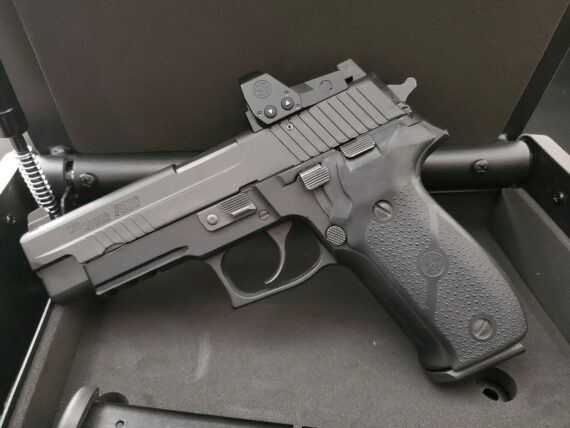
P226 with a Romeo1 Pro. Source: reddit
Best For Concealed Carry – Holosun 407C X2
The 407C X2 is great for concealed carry and extremely affordable, yet it is still among the top three in terms of durability and features.
Like the 508T, the 407C X2 has the Solar Failsafe that sits atop the optic, so you can always line up a shot even when the batteries are near dead.
The 407C also has an auto-adjusting brightness feature and automatic shake-awake to ensure the reticle is always how you need it—never too bright or dark, which is a huge plus for those of us with astigmatism.
Conclusion
Having an optic provides many advantages, whether you’re using your pistol for home defense, concealed carry, or competition.
I hope you now have a better understanding of what to look for in your next optic so you don’t run the risk of wasting your money. There are many quality optics on the market, so don’t limit your search to just those mentioned above.
Be good and take care.